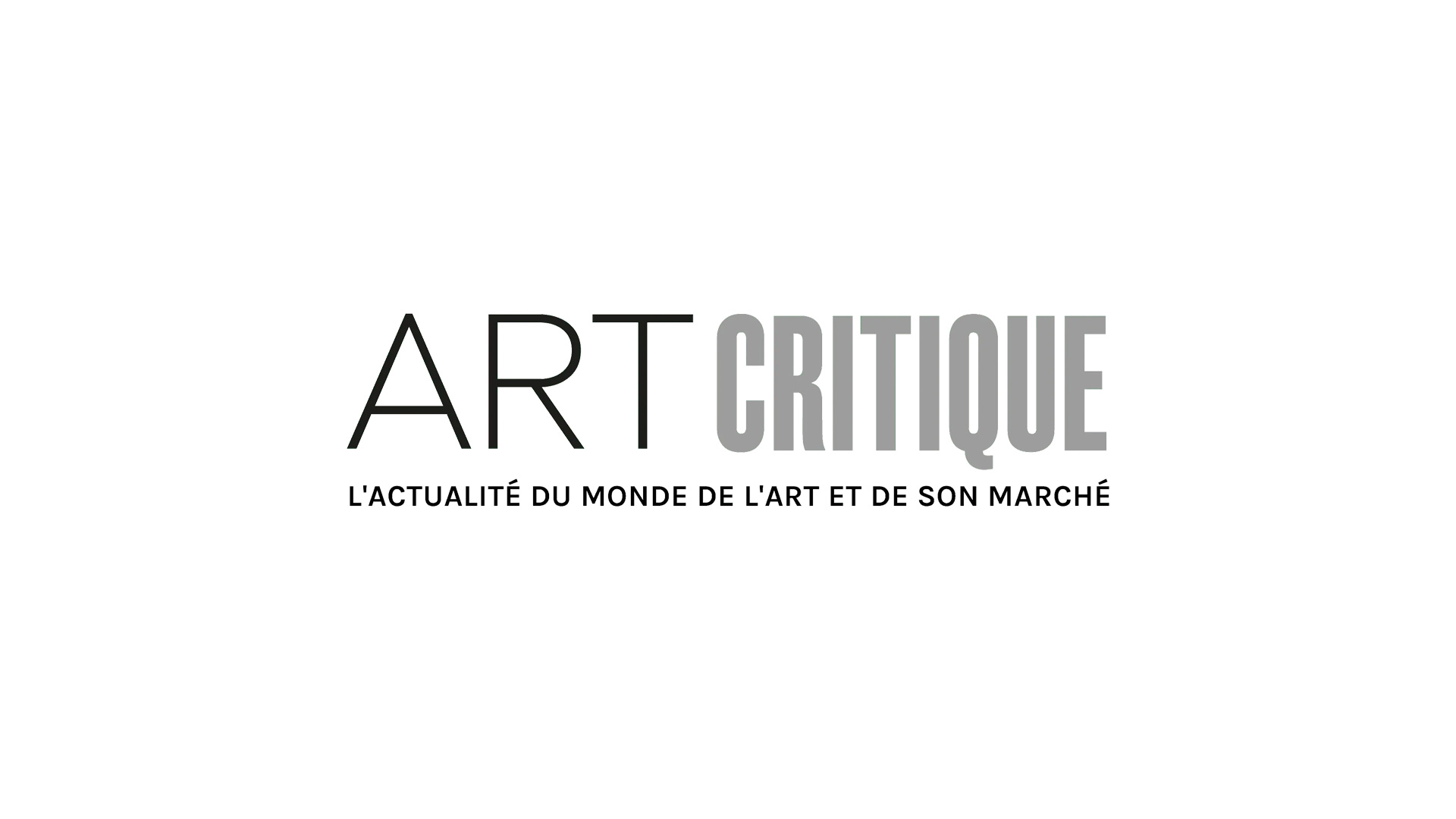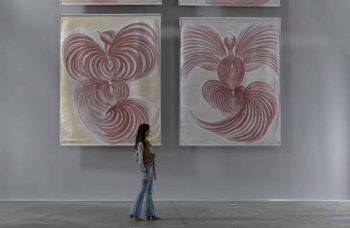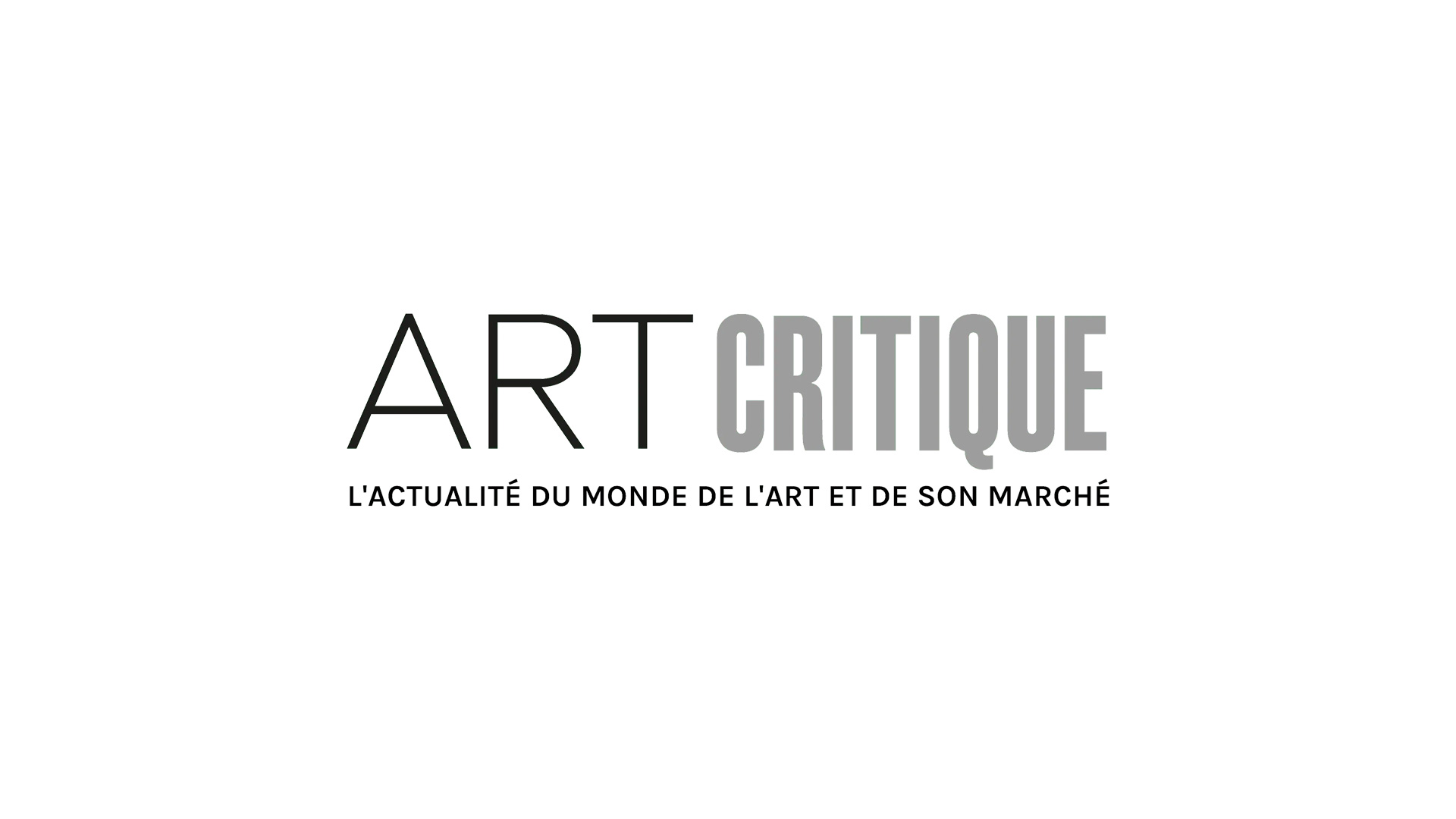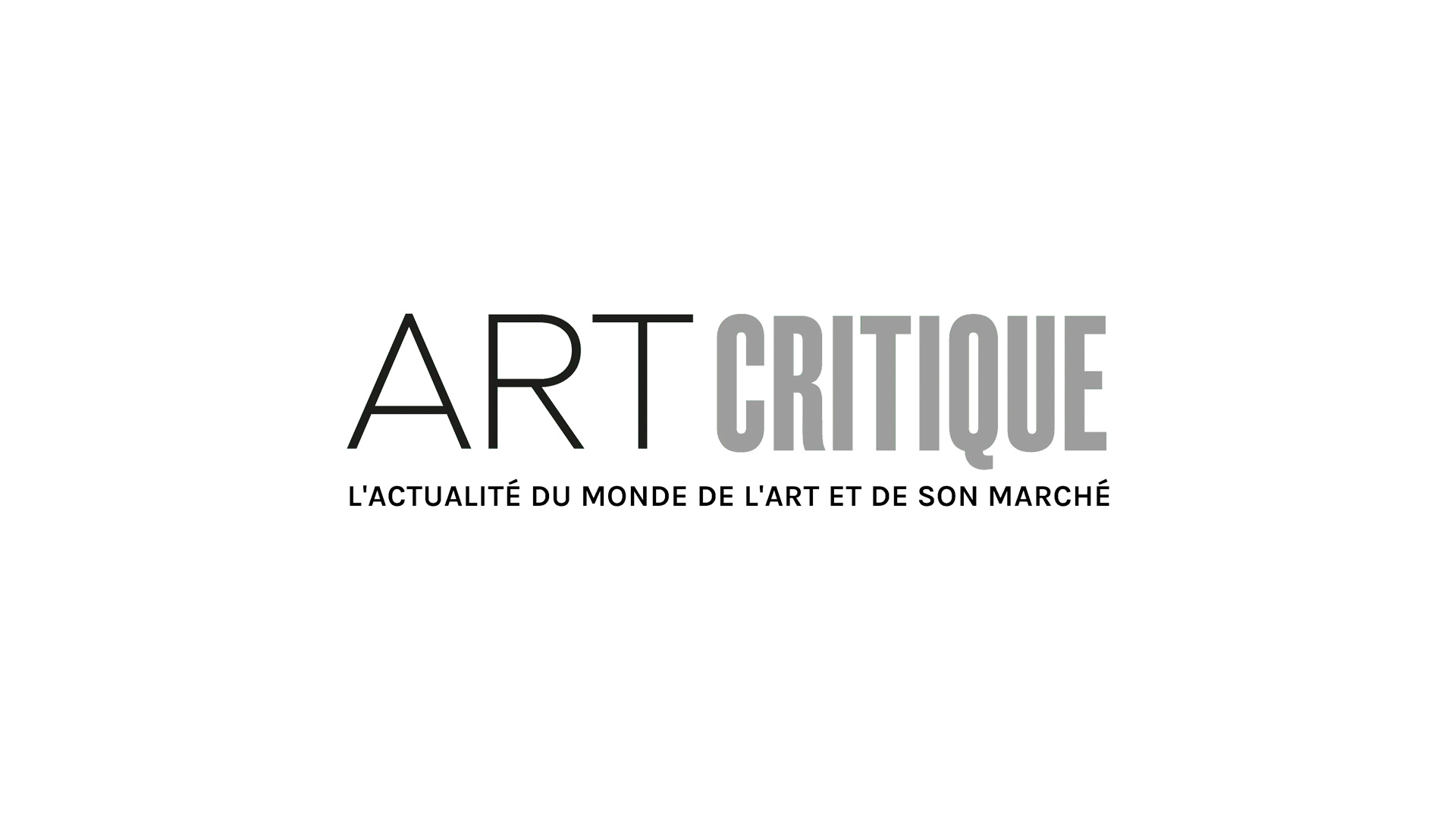In a brief Art World Roundup, we cover Heather Phillipson’s recently unveiled sculpture at Trafalgar Square’s Fourth Plinth, a triptych by Banksy highlighting the refugee crisis and a painting sold under duress during World War II, both of which came up at a Sotheby’s auction this week, and the discovery of where Vincent van Gogh painted his last masterpiece all thanks to a humble postcard.
Sculpture unveiled at Trafalgar’s Fourth Plinth
After hitting delays related to the pandemic, artist Heather Phillipson’s sculpture has finally been unveiled in London’s Trafalgar Square. Originally slated to be installed in March, the work was delayed until yesterday becoming the newest work to grace the Fourth Plinth in the square. Titled THE END, the work features an oversize dollop of whipped cream, topped with a cherry referencing the excesses enjoyed by globalised society. Meanwhile, an enormous fly sits on one side of the cream while a working drone in perched on the bright red cherry as a nod to surveillance. The drone livestreams a video feed to a website set up by Phillipson that shows a view of the typically bustling Trafalgar Square. THE END is the 13th instalment at the Fourth Plinth, which was inaugurated in 1998 and modified in 2005, and will remain in place until the spring of 2022. Other artists whose works have been featured on the Fourth Plinth include Katharina Fritsch, Hans Haacke, David Shrigley, and Marc Quinn. “I’m honored to have been selected to make work for such a significant public site,” Phillipson said in a statement, “and to see THE END scaled up for its ultimate size and context—one in which the surrounding architecture and its population are participants in a mis-scaled landscape.”

Banksy triptych sells for £2.23m at Sotheby’s
It’s been an active year for Banksy and this week, the elusive artist sold a triptych at auction to support a hospital in Bethlehem. The artist reworked three “found” seascape paintings to include orange life vests rolling ashore in the waves. The life jackets, though, are empty, having not saved their wearers, Banksy’s homage to migrants who attempted to cross the Mediterranean Sea headed to Europe in the 2010s but drowned in the process. Titled Mediterranean Sea View 2017, the triptych has hung in the Walled Off Hotel, Banksy’s hotel, marketed as having “the worst view in the world,” situated in Bethlehem. The series sold during Sotheby’s “Rembrandt to Richter” auction on July 28th for £2.23 million, with funds going to help purchase equipment for a Bethlehem children’s hospital and stroke unit. This isn’t Banksy’s first time highlighting the refugee crisis, either. In 2018, the artist donated a 2015 sculpture titled How heavy it weighs to Help Refugees to be raffled off at their pop-up Choose Love shop in Carnaby Street. In 2015, he stencilled an image of Steve Jobs at a refugee camp notoriously known as the Calais “jungle” as a nod to Jobs’ father, a Syrian immigrant. Last year, Banksy made headlines with a mural he left after visiting Venice, notably during the Venice Biennale, of a child holding a pink flare. Banksy was also quite vocal about his opposition to Brexit.
Sotheby’s auction holds another painting of WWII interest
Sotheby’s “Rembrandt to Richter” auction held another painting of interest this week: Paolo Uccello’s Battle on the Banks of a River, Probably the Battle of the Metaurus (207 BCE). The c.1460s painting is significant because it once belonged to Friedrich “Fritz” Gutmann, who sold the work under duress during World War II. Gutmann was later murdered in 1944 at Theresienstadt concentration camp just before his wife was killed at Auschwitz. Simon Goodman, the grandson of Gutmann, only knew the painting from a black and white photo from the 1930s of the work that accompanied a listing of works acquired by Julius Böhler, Hitler’s art dealer. Although Goodman knew the work was forcibly sold to Böhler in 1942, he did not know it had survived the war and in the 1950s, was sold to an Italian family by a Milanese dealer. The family in question were unaware of the painting’s grim history until they looked to sale the work. When they were made aware of its provenance, they asked the auction house to find Gutmann’s family so that they could “do the right thing.” The two parties reached an agreement and as part of the settlement, the Uccello painting was sold at auction this week for £2.41 million, well above its £600,000-£800,000 pre-sale estimate. Rediscovering the painting held “big emotion” for Goodman, as one could imagine. “This was the first painting that my grandfather had bought, so it was clearly an important piece to him,” Goodman, who continues to search for his family’s scattered collection, told The Guardian. “I can touch something that my grandfather touched and that he loved.”
Postcard reveals the location of Van Gogh’s last masterpiece
An old postcard has shed light on the location of a painting by Vincent van Gogh, which he created mere hours before he died. Wouter van der Veen, a scientific director of the Institut van Gogh, made the discovery during lockdown while reviewing a collection of historical postcards lent to him by an elderly French woman. At first, Van der Veen didn’t make the connection but then it struck him that a black and white postcard of a cyclist along the Rue Daubigny in Auvers-sur-Oise resembled a grove of snarled tree roots depicted in Van Gogh’s 1890 Tree Roots. Once lockdown restrictions eased in France, Van der Veen was able to travel to the postcards location and he found it was very near the Auberge Ravoux inn where Van Gogh died of a gunshot wound, expected to have been self-inflicted. “Every element of this mysterious painting can be explained by observation of the postcard and the location: The shape of the hillside, the roots, their relation to each other, the composition of the earth and the presence of a steep limestone face,” said the Van Gogh Museum located in Amsterdam in a statement. For the discovery, Emilie Gordenker, director of the Van Gogh Museum, and Willem van Gogh, great-grandson of the renowned artist’s brother Theo, placed a plaque at the site in Auvers to mark the 130th anniversary of Van Gogh’s passing on July 29th, 1890.










